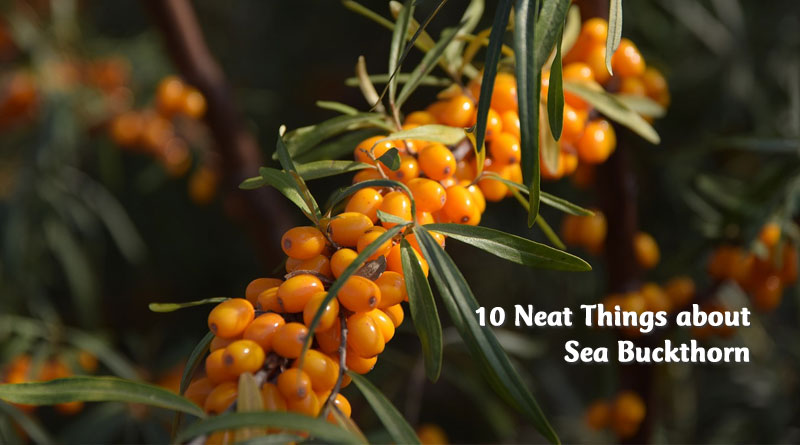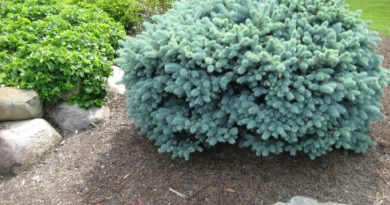10 Neat Things About Sea Buckthorn
1. Shiny horse.
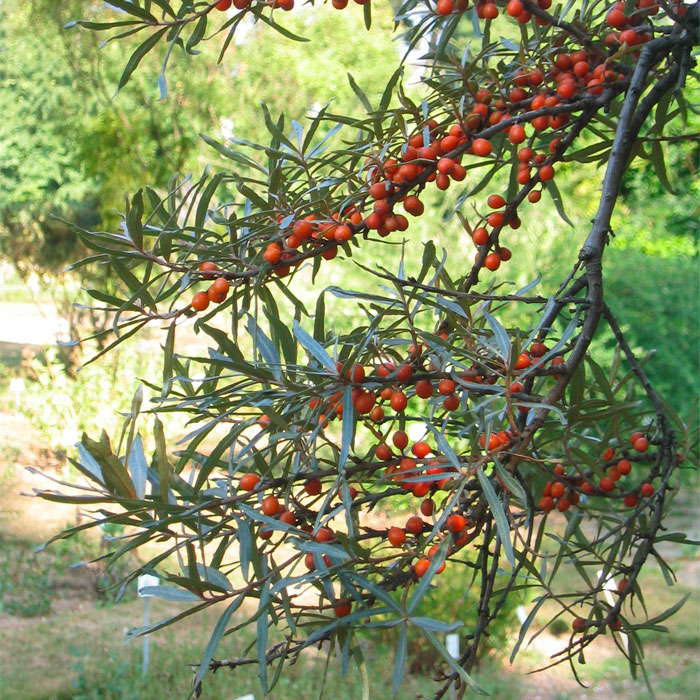
Sea buckthorn, Hippophae rhamoides, is a shrub or tree, growing eight to 12 feet tall, native to Europe and China. It has amazing properties. Over 200 medicinal and cosmetic products are made from sea buckthorn worldwide. In ancient Greece the twigs and leaves were used as horse fodder to promote weight gain and a shiny coat. Indeed, hippophae means “shiny horse”!
2. Dr. Oz was impressed!

Television’s Dr. Oz did a show on sea buckthorn June 2011. The response was so great that it caused the show’s servers to crash for 48 hours after it aired. It may have been his assertion that sea buckthorn can be used as a weight loss aid that did it. According to Oz, some ingredient in the oil from the seeds sends a signal to the brain to stop storing fat, preventing absorption of excess calories into fat tissues. None of this has stood up to scientific research.
3. Omegas 3, 6, 9… and 7!
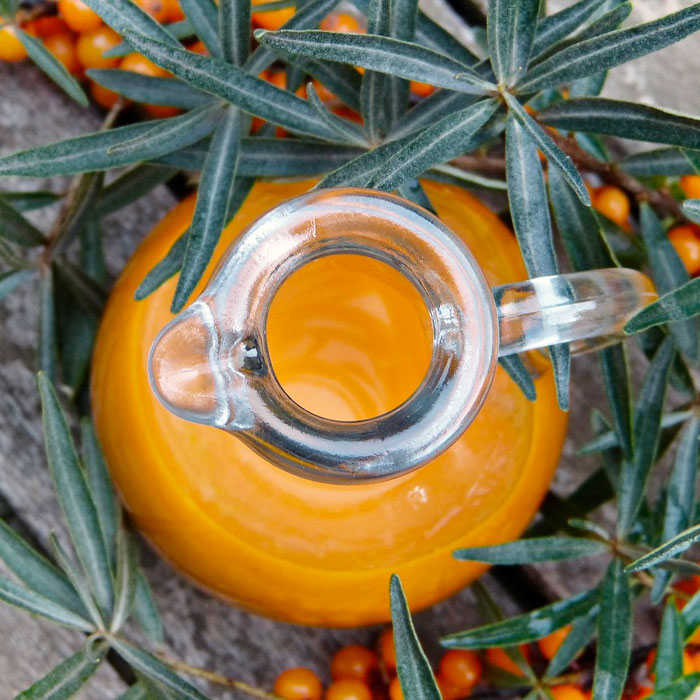
Palmitoleic acid or Omega-7 mono-unsaturated fatty acid is found rarely in plants, the most well-known source being macadamia nuts (20 percent) and jojoba oil (2 percent). But it is also present in larger concentrations in sea buckthorn (36 percent) and has become the darling of the skin care industry. Interestingly, palmitoleic acid has been implicated in the so called “old-people odour” because natural production declines as we get older. Used topically, it replaces the loss of the naturally occurring fat and makes skin soft and supple – and odourless.
4. Down on the farm and in the garden.
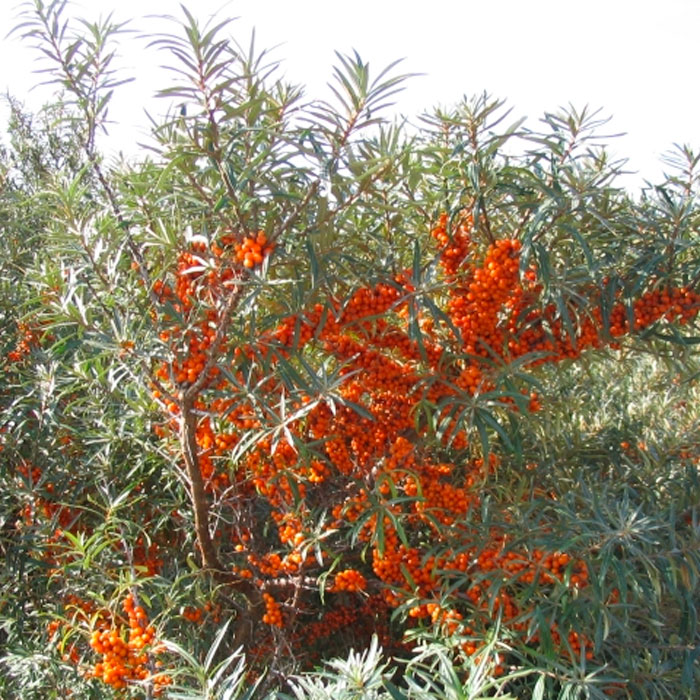
Sea buckthorn is handed out free to farmers by the PFRA because it has many other virtues. Originally introduced as a shelterbelt plant, it is also a non-leguminous nitrogen fixer. Its extensive root system can stabilize sandy or eroded soils. It is drought and salt tolerant. It is attractive to songbirds for its berries, while its thorns deter some animals. It can be invasive, but contrary to some beliefs, it will not grow in the shade or under most trees. However, it does apparently promote the growth of poplars and pines. One acre provides about three tons of berries.
5. And that’s not all!
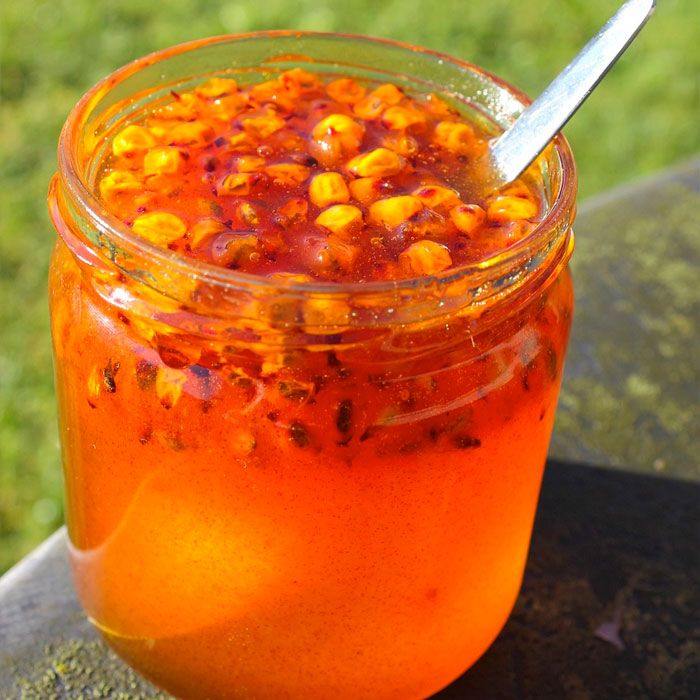
Sea buckthorn is high in vitamin C (10 to 50 times higher than oranges) and in vitamin E. The berry is also rich in carotenoids, flavonoids, plant sterols, lignans and minerals. It reduces LDL cholesterol and protects the liver. It has been used in the treatment of diabetes. In Finland, it is added to baby food. It’s a popular drink in Europe and is even used to make a liqueur. A recent introduction by Okanagan Sprits in Vernon, BC was a huge success.
6. Radiation burn prevention and cure.
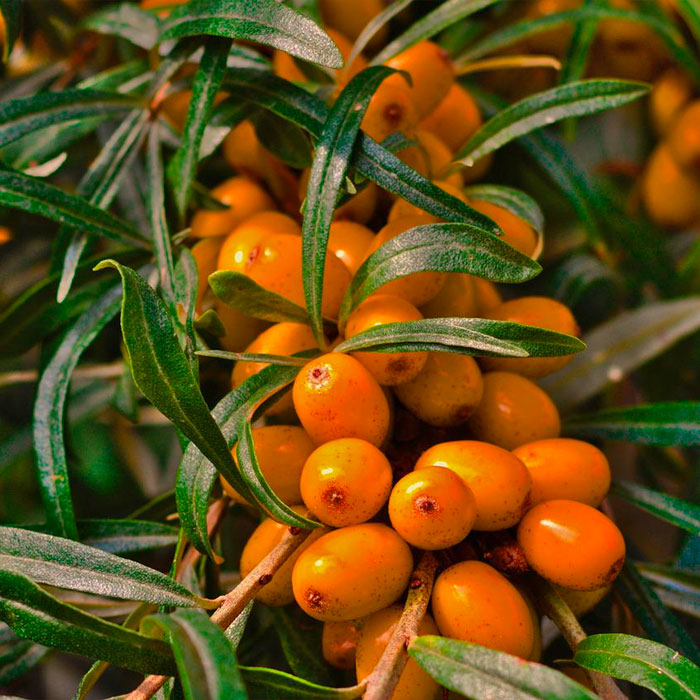
The Russians use sea buckthorn topically to prevent radiation burns on its astronauts as they return from space. It is also good for treating regular burns, eczema and wounds. Russian astronauts take it orally to reduce stress. It was used to treat Chernobyl victims for radiation damage.
7. Mucous membranes.
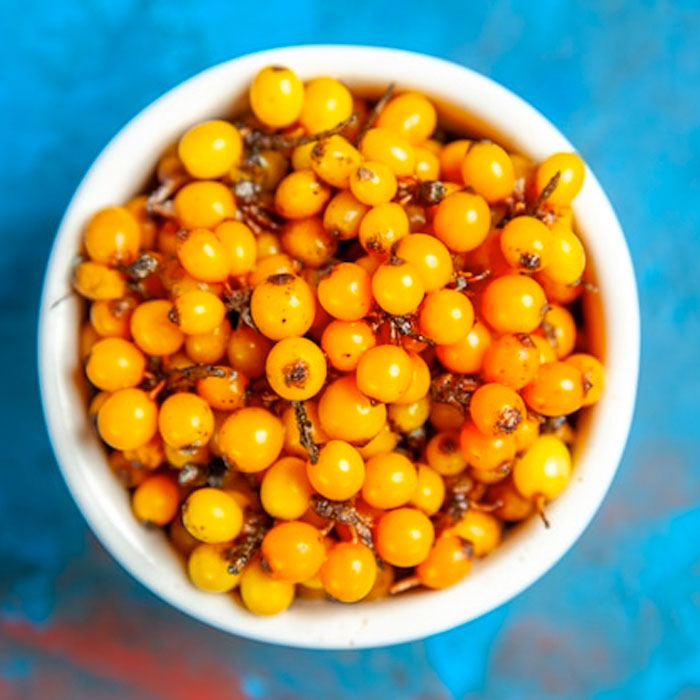
Sea buckthorn has long been used to treat ailments of the nose, lips, throat and gastrointestinal tract and stomach as well as the female urinary tract and genital areas. It is used in the treatment of stomach and esophageal tumours and as a treatment of GERD and Barrett’s esophagus. It can reduce acid reflux.
8. Useful parts.
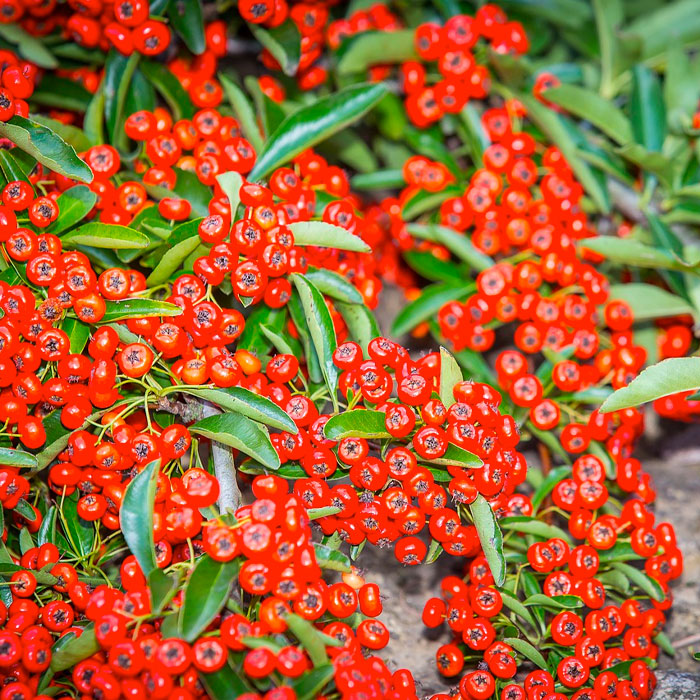
The red, yellow or orange berries, the silvery leaves, seeds and the bark are all used. Each has a different virtue. In addition to its medical properties, the berries contain malic acid, that sour ingredient so beloved by kids in sour candies.
9. A thorny problem.
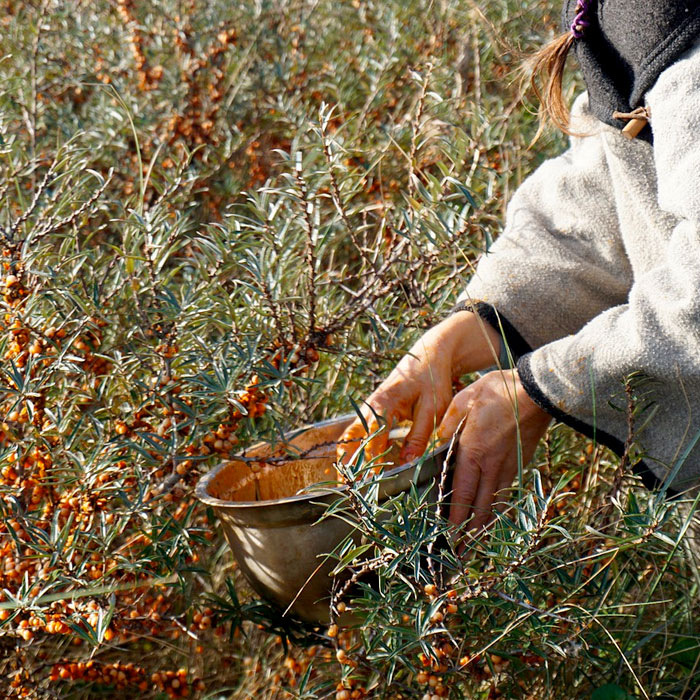
Various provincial organizations across the country promote the planting of sea buckthorn as a cash crop, but harvesting is a tricky matter because of the sharp thorns that protect the berries. So now in Russia, Mongolia and Germany, thornless or nearly thornless varieties are being developed with some success. The Prairie Agriculture Machinery Institute, whose mission it is to promote technologies in the agriculture sector in Manitoba and Saskatchewan, is researching a new type of harvester for the berries. In some places such as Tuscany, the whole plant is harvested and the parts are separated after harvest. The plant will regrow from the pollarded stumps.
10. Siberian pineapple.
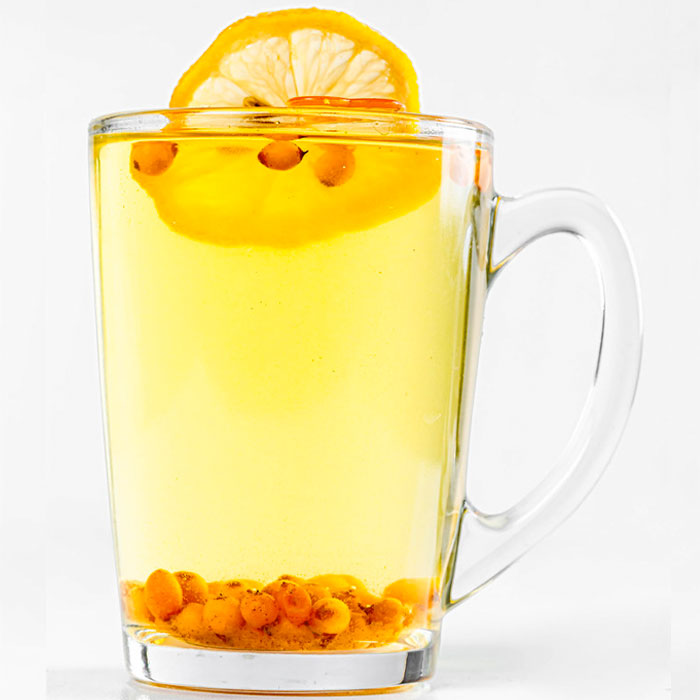
In Russia, sea buckthorn is called Siberian pineapple. Sea buckthorn juice was the official sports drink of the China Olympics. Ninety percent of the world’s sea buckthorn comes from China. The plant is over 40 million years old.
-Dorothy Dobbie Copyright©
Pegasus Publications Inc

